Gabriella Sanchez is a Mexican-American artist creating large-scale, bold paintings that explore the duality of her cultural identity.
The clues are there for those who might recognize them—the references to cultural symbols, the nods to Latinx fashion. Gabriella Sanchez peppers her work with symbols and meaning known to those who need to know. Or, as she puts it, “If you know, then you know.”
We stopped by the artist’s studio to talk about her background, artistic journey, and current goals.Gabriella Sanchez recently displayed her work at the Mexican Consulate in Los Angeles and will have a solo exhibit at Charlie James Gallery through August 18th. The following delves into the artist’s work and history in her words, as told to writer Eva Recinos.
The clues are there for those who might recognize them—the references to cultural symbols, the nods to Latinx fashion. Gabriella Sanchez peppers her work with symbols and meaning known to those who need to know. Or, as she puts it, “If you know, then you know.”
On Looking Deeper
There are always hidden meanings and deeper layers [in painting]. But, usually, art talks a lot about art history and art itself, which is very alienating if you don’t have a certain level of education or don’t engage with art regularly.
In this one, for example [Ed. note: Here, Gabriella Sanchez is discussing her painting, So Much, Too Much, shown in this article courtesy of the artist and the Charlie James Gallery.], people’s features are kind of obscured. So you look at other signifiers—their clothing, the way they’re standing, the text. At first, [looking at the text], what stands out is “so much,” which could give a positive vibe. But then, if you look a little harder, you’ll see that there is a “not.” It says “not” up on top, so it’s “not so much.” It’s hinting that you can have these signifiers, but just a little bit. And that’s the experience that I want viewers to have looking at this—this layered effect where they might not notice everything that’s going on in the painting at first but, the longer they look, the more it reveals itself.
Even though my paintings have a deeper, conceptual meaning behind them, they are still very visually pleasing and very colorful. At first, I was making stuff that was black and white and red, very serious art colors. Then I started getting away from that and letting myself enjoy making art. In my artwork, I balance the visual pleasure and the conceptual weight. Before, I found I was making work that I felt wasn’t for my community; it wasn’t for my family to enjoy, it was talking to the community that I wasn’t a part of. And that can be really alienating. As a whole, the art world is very alienating to specific groups of people: people of color and people who, maybe, don’t have certain levels of education. So, I like that the layered meaning [in my art] is for people who are from my own community who aren’t necessarily the art world community.
Gabriella Sanchez Education and Segregation
We moved around the L.A. area, but I went to school in Pasadena. And the system over there ends up being very segregated. Anyone who has a little bit of money sends their kids to private schools, so the public schools are underfunded. I ended up going to a private school because my mom got us scholarships; she got a job at one of the schools as a receptionist to try to get us in there. She really wanted us to go to what she thought were good, Christian schools because she was a single mom. If she was going to have to work multiple jobs and wasn’t going to be around, she wanted what she thought would be a good influence on our lives.That’s the school system I was a part of, and it was not great. It was very alienating, and it made me feel very separated from my own community and culture.
Growing up in L.A. other than that was great; I liked it. And I still love it! I went to a small school in San Diego for college, and that was also a weird experience because San Diego’s really weird. I actually lived abroad after that because I graduated and I was, like, “I don’t know what I’m going to do!” I had a degree, but couldn’t get a job except for babysitting. I was a live-in nanny at the time, for a family in Paris.
That was actually a great experience. I was doing illustration. The mom of the family that I was nannying for was the art director for this French magazine. She gave me my first commercial illustration job and, at that moment, I realized, oh, okay, this is how I can earn money. So, when I came back to L.A., I started trying to do more of that work. I ended up getting an in-house job as a designer and illustrator, but the main goal was always to do fine art. I had been doing that in school, and was trying to still do that as I worked. But I had no safety net or anything. My family couldn’t help me out, even though they were very supportive. So I thought if I fail, I just fail. I first needed to make money to fund my life. I don’t have early memories of interacting with fine art. The only art I really remember seeing is things in church. But Gabriella Sanchez remembers drawing a lot as a kid. There was a year when [my mom] tried to homeschool me, and I remember drawing a lot that year. She would just get tracing paper and tear out editorials from magazines or little pictures and tell me to trace something; that would be my assignment. And I really loved doing that. That’s probably my earliest memory. I always enjoyed art, I just really had no idea that it could be a career, that “artist” was a real thing that people did.
Going Big
The one consistent line through my art has been a certain narrative quality that I draw from my own experiences, a certain level of communication with the audience beyond just conveying a scene or a picture. I used to be, and still am, very into highly conceptual, New Genre work: Bruce Nauman, Marina Abromovich, people like that. But the type of work I make now obviously has changed, because I do painting. I always enjoyed doing paintings, but for whatever reason I wanted to do something that was totally new and at an experimental level. I slowly realized that I could still do something that was experimental in painting through the messaging and through the way that I paint. I wanted to not totally negate the pleasure of art. I feel like that is a trap that I had been falling into in trying to make this super highly conceptual art, leaving out some of the joy of the end result.
I’ve always enjoyed large paintings. It’s a very physical act for me, so it’s much more enjoyable for me when they’re large. I like people like Leon Golub. He does massive paintings and I love those. Painting can be kind of delicate and looked upon with a certain reverence, and I like the larger paintings because they’re a little bolder and more in your face. They’re much more imposing; they’re not necessarily super delicate.
On Being Understood
I had people that were messaging me or coming in for studio visits, people who weren’t even in the art world and people who were. It was, across the board, people being, like, “Wow, I love what you’re doing.” I would ask them questions to see what they thought I was doing, and I was so surprised that most of the answers were spot-on. People were really getting the codes, I guess, that I was putting out there. And of course those kind of conversations were from other people of color who felt similarly, so they got those messages. Those have been the most exciting conversations.
Words by Eva Recinos
Read More about Inteligencia here


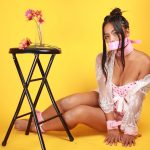






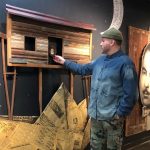


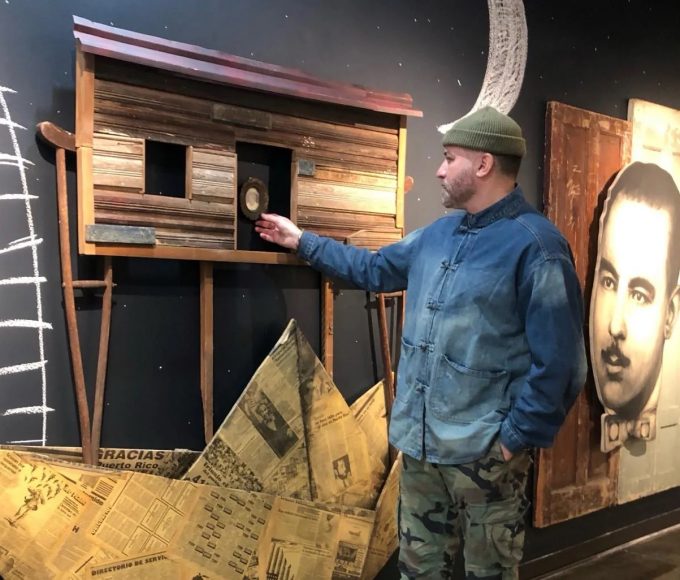

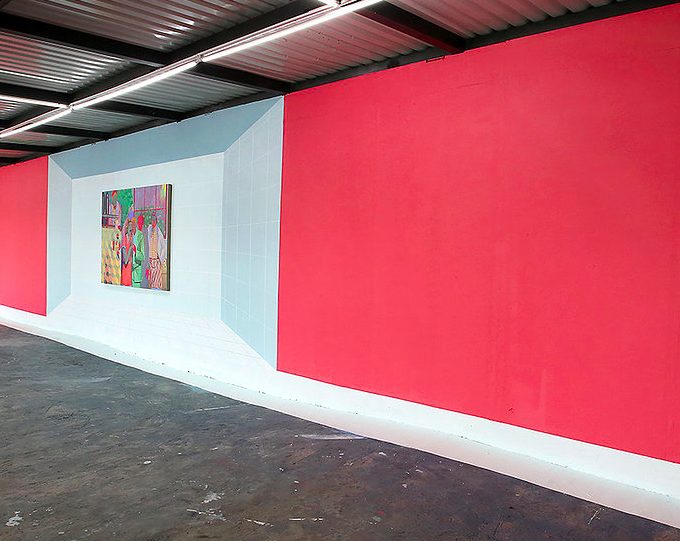
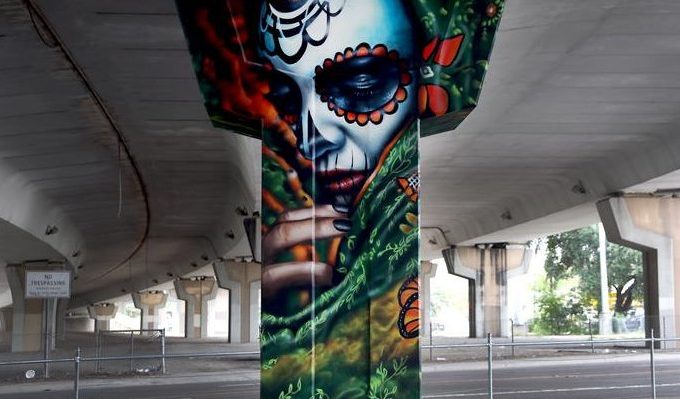

Leave a comment